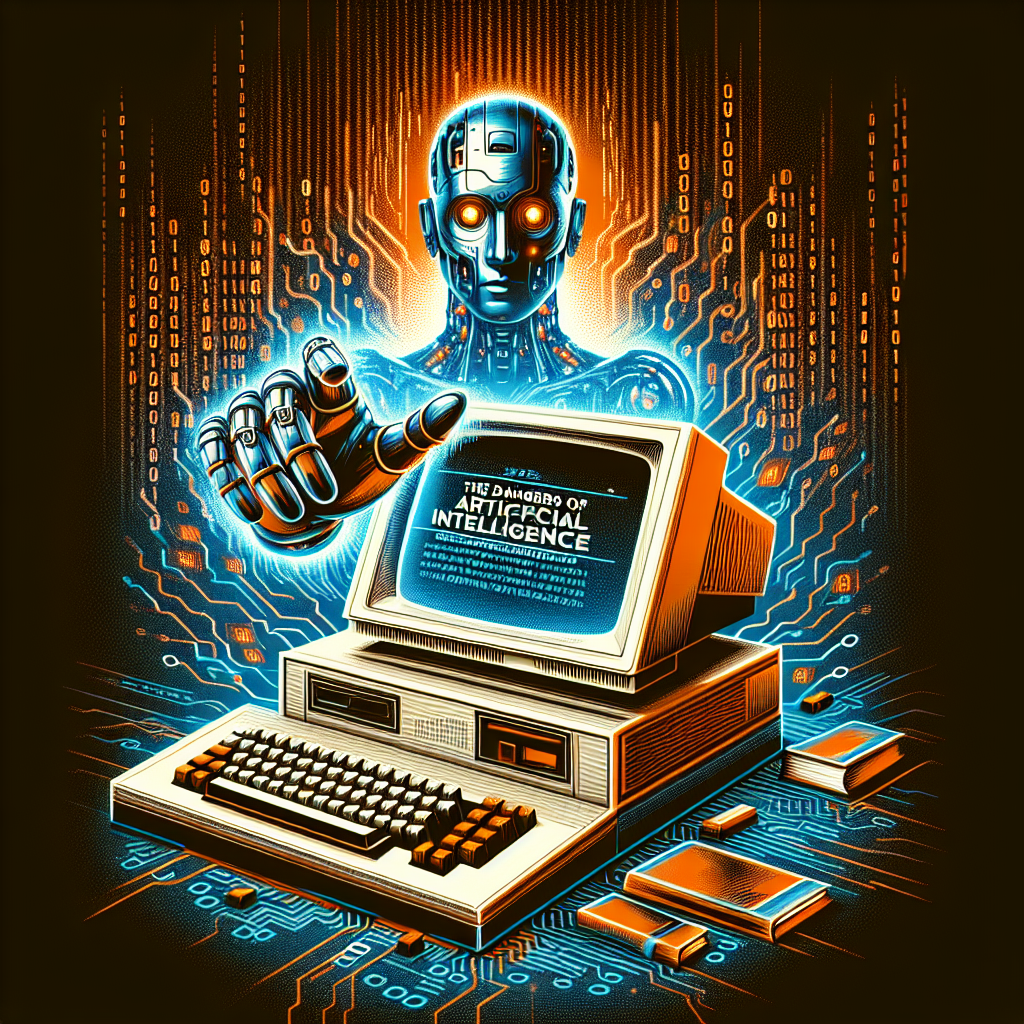Artificial intelligence (AI) has become a prominent topic in recent years, with advancements in technology leading to the development of increasingly sophisticated AI systems. While AI has the potential to revolutionize many aspects of our lives, there are also significant dangers associated with its use. In this comprehensive guide, we will explore the various risks and dangers of AI, as well as potential ways to mitigate these dangers.
The Dangers of Artificial Intelligence:
1. Job Displacement: One of the most immediate dangers of AI is the potential for job displacement. As AI systems become more advanced, they have the ability to perform tasks that were previously done by humans, leading to job losses in various industries. This can have a significant impact on the economy and society as a whole, as many people may find themselves unemployed or underemployed as a result of AI automation.
2. Bias and Discrimination: Another major danger of AI is the potential for bias and discrimination in decision-making processes. AI systems are only as unbiased as the data they are trained on, and if that data contains biases, the AI system may perpetuate and even amplify those biases. This can lead to discriminatory outcomes in areas such as hiring, lending, and criminal justice, with marginalized groups being disproportionately affected.
3. Privacy and Surveillance: AI systems have the ability to collect and analyze vast amounts of data, raising concerns about privacy and surveillance. As AI technology becomes more widespread, there is a risk that personal information could be misused or exploited by companies or governments. This could lead to violations of individual privacy rights and undermine trust in AI systems.
4. Security Risks: AI systems can also pose security risks if they are not properly secured. Hackers could exploit vulnerabilities in AI systems to launch cyber attacks, steal sensitive information, or disrupt critical infrastructure. This could have serious consequences for businesses, governments, and individuals, leading to financial losses, data breaches, and even physical harm.
5. Autonomous Weapons: The development of autonomous weapons powered by AI is a growing concern in the field of military technology. These weapons have the potential to make decisions and take actions without human intervention, raising ethical questions about the use of lethal force. There are also concerns about the potential for these weapons to be hacked or malfunction, leading to unintended consequences and loss of control.
6. Existential Risk: Some experts have raised concerns about the long-term risks of AI, including the potential for superintelligent AI to surpass human intelligence and pose an existential threat to humanity. This scenario, known as the “AI alignment problem,” raises questions about how to ensure that AI systems are aligned with human values and goals, and do not pose a threat to the future of humanity.
Mitigating the Dangers of Artificial Intelligence:
While the dangers of AI are real and significant, there are also ways to mitigate these risks and ensure that AI technology is developed and used responsibly. Some potential strategies for addressing the dangers of AI include:
1. Ethical Guidelines: Establishing ethical guidelines and standards for the development and use of AI can help to ensure that AI systems are designed in a way that respects human rights and values. This includes considerations of fairness, transparency, accountability, and privacy in the design and deployment of AI systems.
2. Regulation and Oversight: Governments and regulatory bodies can play a crucial role in overseeing the development and deployment of AI technology, setting standards for safety, security, and ethical use. Regulation can help to ensure that AI systems are used in a responsible and transparent manner, with safeguards in place to protect against potential risks.
3. Transparency and Explainability: AI systems should be designed in a way that is transparent and explainable, so that users can understand how decisions are being made and hold AI systems accountable for their actions. This can help to prevent bias and discrimination, as well as build trust in AI technology.
4. Human-in-the-Loop: Incorporating human oversight and control into AI systems can help to ensure that decisions are made in a way that aligns with human values and goals. Human-in-the-loop systems allow humans to monitor and intervene in AI decision-making processes, reducing the risk of unintended consequences.
5. Research and Collaboration: Continued research and collaboration among AI researchers, industry stakeholders, policymakers, and ethicists can help to address the complex challenges and dilemmas posed by AI technology. By working together, we can develop solutions that prioritize human well-being and safety in the development and use of AI.
Frequently Asked Questions:
1. What is artificial intelligence?
Artificial intelligence (AI) refers to the development of computer systems that can perform tasks that typically require human intelligence, such as learning, reasoning, problem-solving, and decision-making. AI technology is used in a wide range of applications, from virtual assistants and self-driving cars to medical diagnosis and financial trading.
2. What are the dangers of artificial intelligence?
The dangers of AI include job displacement, bias and discrimination, privacy and surveillance, security risks, autonomous weapons, and existential risk. These dangers arise from the potential for AI systems to make decisions that have negative consequences for individuals, society, and the environment.
3. How can the dangers of artificial intelligence be mitigated?
The dangers of AI can be mitigated through ethical guidelines, regulation and oversight, transparency and explainability, human-in-the-loop systems, and research and collaboration. By taking proactive steps to address the risks and challenges posed by AI technology, we can ensure that AI is developed and used in a responsible and ethical manner.
In conclusion, the dangers of artificial intelligence are real and significant, but with careful planning and responsible development, we can mitigate these risks and harness the potential benefits of AI technology. By working together to address the ethical, legal, and social implications of AI, we can ensure that AI technology serves the common good and enhances human well-being for generations to come.

